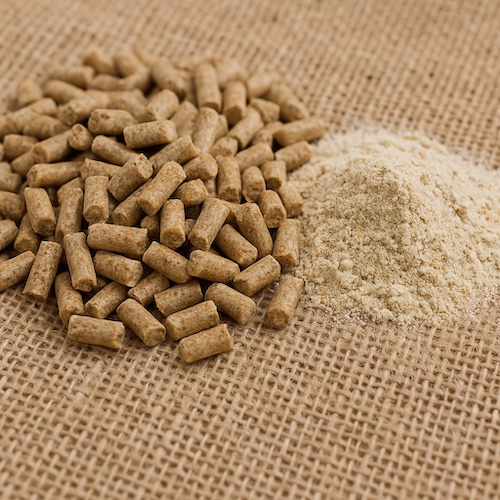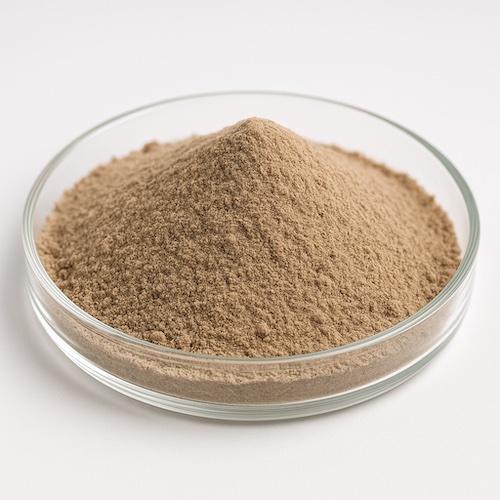What is a Pellet Binder and Why is it Important in Animal Feed?
Introduction
Pellet feed is one of the most important advances in the feed industry, providing better physical quality, reduced waste, and improved digestibility for animals. To produce durable and stable pellets, the use of a pellet binder is often necessary.
A pellet binder is not a single specific additive, but rather a group of substances with adhesive properties that help hold feed particles together.
Key Features of a Suitable Pellet Binder
An effective pellet binder should provide properties that improve pellet durability and quality:
-
Moisture absorption and bonding: binders absorb part of the steam moisture during conditioning and help particles stick together.
-
Support during compression: in the pellet press (die and roller) or extruder, binders act like “cement,” holding feed particles firmly.
-
Improved durability: binders prevent pellet breakage during handling, transport, and feeding.
-
Facilitation of pelleting: in certain formulations, pelleting is almost impossible without a proper binder.
Bentonite – The Most Common Pellet Binder in Iran
In many feed mills in Iran, bentonite is the first choice due to its abundance and low cost. Bentonite is an aluminosilicate mineral widely used as a pellet binder.
Advantages
-
Low cost and easy availability
-
Good water absorption capacity
-
Helps increase pellet density
Limitations
-
Deposits in die holes, leading to reduced efficiency and higher maintenance
-
Increased machine wear and energy consumption
-
Reduced feed palatability when used in higher doses
-
Possible reduction in absorption of certain micronutrients in the intestine
Although bentonite is widely used for economic reasons, it is not always the most suitable option for producing high-quality pellets.
Alternatives to Bentonite as Pellet Binders
-
Starches (especially corn starch):
-
Corn starch, rich in amylopectin, provides excellent binding capacity.
-
-
Gluten:
-
Composed of gliadin and glutenin, gluten forms a strong protein network.
-
When combined with starch under heat treatment, it creates strong binding effects.
-
-
Gums and resins:
-
Both natural and synthetic forms can be used, but care must be taken to avoid harmful effects on animals or consumers.
-
Conclusion
Pellet binders play a crucial role in the feed pelleting process. While bentonite is the most common and cheapest binder in Iran, it has several drawbacks, including reduced feed palatability and increased machine wear.
Alternative binders such as starch and gluten can improve pellet quality and production efficiency. Choosing the right pellet binder not only enhances feed processing but also improves animal performance and overall profitability.



